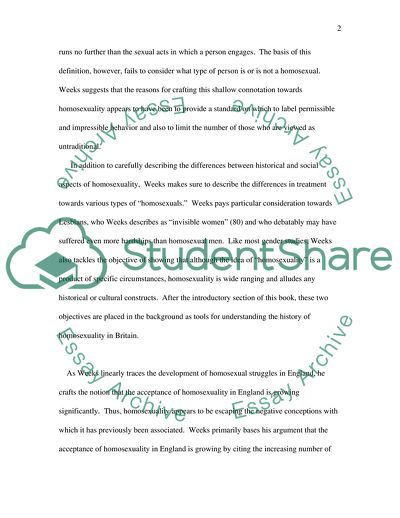Cite this document
(An Invaluable Study with Slight Setbacks: A Review of Weeks Coming Out Book Report/, n.d.)
An Invaluable Study with Slight Setbacks: A Review of Weeks Coming Out Book Report/. https://studentshare.org/gender-sexual-studies/1706413-book-review-jeffery-weekss-coming-out-homosexual-politics-in-britain-from-the-nineteenth-century-to-the-present
An Invaluable Study with Slight Setbacks: A Review of Weeks Coming Out Book Report/. https://studentshare.org/gender-sexual-studies/1706413-book-review-jeffery-weekss-coming-out-homosexual-politics-in-britain-from-the-nineteenth-century-to-the-present
(An Invaluable Study With Slight Setbacks: A Review of Weeks Coming Out Book Report/)
An Invaluable Study With Slight Setbacks: A Review of Weeks Coming Out Book Report/. https://studentshare.org/gender-sexual-studies/1706413-book-review-jeffery-weekss-coming-out-homosexual-politics-in-britain-from-the-nineteenth-century-to-the-present.
An Invaluable Study With Slight Setbacks: A Review of Weeks Coming Out Book Report/. https://studentshare.org/gender-sexual-studies/1706413-book-review-jeffery-weekss-coming-out-homosexual-politics-in-britain-from-the-nineteenth-century-to-the-present.
“An Invaluable Study With Slight Setbacks: A Review of Weeks Coming Out Book Report/”. https://studentshare.org/gender-sexual-studies/1706413-book-review-jeffery-weekss-coming-out-homosexual-politics-in-britain-from-the-nineteenth-century-to-the-present.


